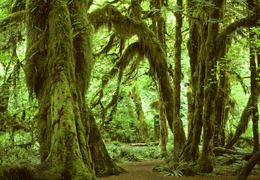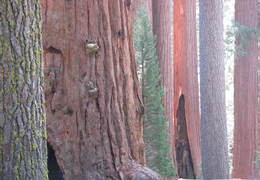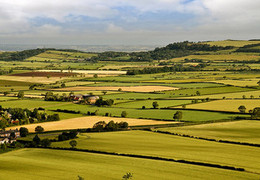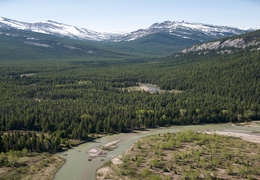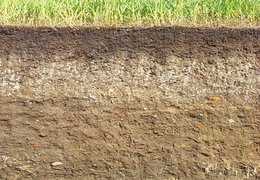Burned Area and Severity
- /ecoregions/
Now Showing: 2006
Summary
The burn area data product includes simulated burn scars and severity (high, moderate, and low) for various climate change scenarios and global circulation models (GCMs). The data are 250 m resolution and have an annual time step. Regional-scale analyses of these data are most appropriate, for example annual area burned at the scale of an EPA level 3 ecoregions. We recommend against using the simulated burned areas in pixel-level analyses, because vegetation and fuels were not adjusted after simulated burns and the interactions between past fires are not accounted for.
Additional Data
Suggested Citation
Zhu, Zhiliang, ed., Bergamaschi, Brian, Bernknopf, Richard, Clow, David, Dye, Dennis, Faulkner, Stephen, Forney, William, Gleason, Robert, Hawbaker, Todd, Liu, Jinxun, Liu, Shuguang, Prisley, Stephen, Reed, Bradley, Reeves, Matthew, Rollins, Matthew, Sleeter, Benjamin, Sohl, Terry, Stackpoole, Sarah, Stehman, Stephen, Striegl, Robert, Wein, Anne, and Zhu, Zhiliang, 2010, A method for assessing carbon stocks, carbon sequestration, and greenhouse-gas fluxes in ecosystems of the United States under present conditions and future scenarios: U.S. Geological Survey Scientific Investigations Report 2010–5233, 188 p. (Available from USGS).
Methods
The burned area simulations were stochastic and based on a probabilistic ignition model and mechanistic fire-spread model. The ignition model consisted of a general linear model with a binary response, constructed by relating daily ignition locations in the monitoring trends in burn severity database to predictor variables including daily weather, fuel moisture, fire behavior indices, monthly and seasonal climate variables, and vegetation and land cover. In the simulations, the ignition model was used to stochastically generate ignition locations. After a location was generated, fires were spread using the minimum-travel time algorithm which generates spatially-explicit burn scars in relation to weather and fuel moisture conditions, fuels, and topography. Simulations were first calibrated using historic, observed weather data from 1984-2008 and then future projections were made using downscaled GCM data. For this assessment, the climate change projections included data produced by the CCCma CGCM 3.1, CSIRO–Mk3.0, MIROC 3.2-medres GCMs for the scenario characterized by moderate population growth, high economic growth, rapid technological innovation, and balanced energy use.">A1B, A2, and B1 scenarios. Fuels and vegetation data were provided by the LANDFIRE project.
